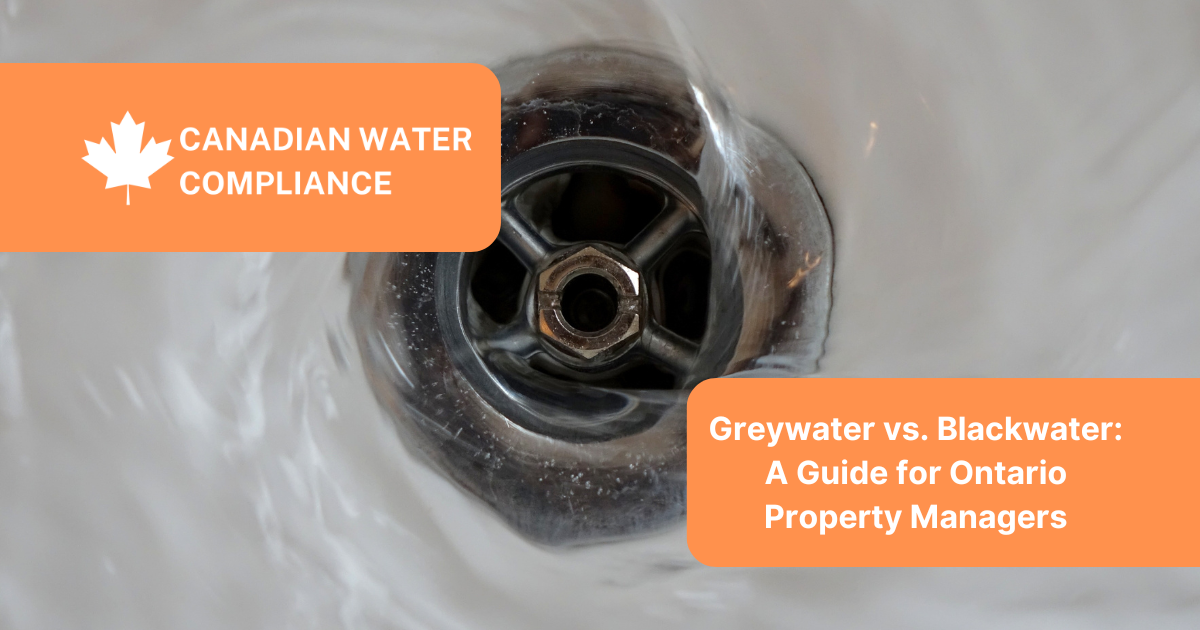
Written By: Canadian Water Compliance | On
As sustainable building practices become more prominent in Ontario, many property managers are exploring innovative ways to reduce water consumption and improve efficiency. One common area of interest is the reuse of wastewater—particularly greywater. But it's critical to understand the difference between greywater and blackwater, their associated risks, and the strict regulations that govern their treatment and reuse.
Greywater is wastewater generated from sinks, showers, bathtubs, and laundry machines. While it may contain soap, dirt, hair, and other debris, it doesn't include serious pathogens if isolated properly. This makes greywater a candidate for reuse in non-potable applications such as toilet flushing, irrigation, and cooling systems.
Blackwater, on the other hand, is wastewater from toilets and urinals, often including kitchen sinks and dishwashers due to the presence of food waste and grease. It contains higher levels of organic matter, bacteria, and pathogens and must be treated as sewage. Reuse is far more restricted and heavily regulated.
Ontario regulations distinguish between greywater and blackwater because of the associated health risks. Misclassifying wastewater or reusing untreated greywater can introduce harmful bacteria such as E. coli and Legionella into a building’s systems. Property managers are responsible for ensuring that any reuse system meets public health standards and environmental requirements.
The Ontario Building Code (OBC) permits the reuse of greywater under specific conditions. Systems must be designed, installed, and maintained in accordance with Part 7 of the OBC, and all reused water must be properly treated and disinfected. Greywater reuse is most commonly allowed for subsurface irrigation and toilet/urinal flushing.
Blackwater reuse, by contrast, is generally not permitted in Ontario without extensive treatment processes that are rarely feasible in commercial or residential buildings.
Improper or unpermitted reuse of greywater or blackwater can:
Contaminate potable water supplies
Promote bacterial outbreaks like Legionnaires' disease
Violate provincial regulations, leading to fines or building compliance issues
Damage plumbing systems due to corrosion or microbial buildup
If you're considering implementing a greywater system:
Consult with a qualified engineer or water treatment specialist to ensure the system meets OBC requirements
Test the water regularly for bacterial and chemical contaminants
Keep detailed maintenance and treatment records for inspections or audits
Educate building occupants on what goes down drains that feed into greywater systems
Partner with a licensed water testing provider to ensure ongoing compliance and safety
At Canadian Water Compliance, we support property managers across Ontario in implementing safe, compliant water reuse systems. We offer:
Certified greywater testing services
System audits and risk assessments
Bacterial testing for Legionella, E. coli, and other key indicators
Guidance on meeting Ontario Building Code requirements
By partnering with us, you don’t just promote environmental sustainability—you help protect your building’s infrastructure, its occupants, and your regulatory standing.